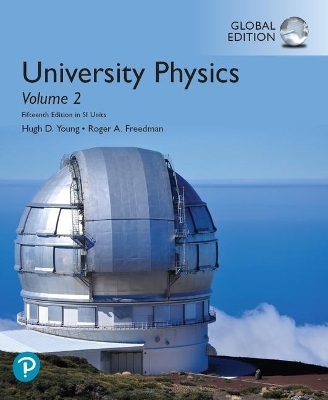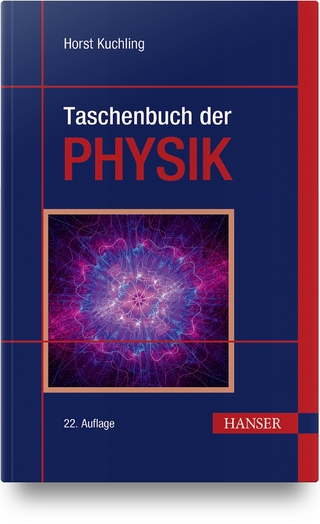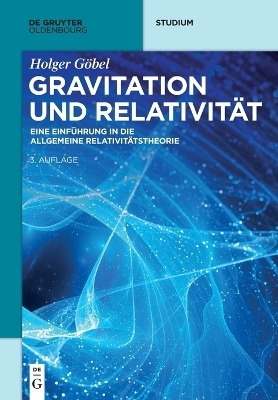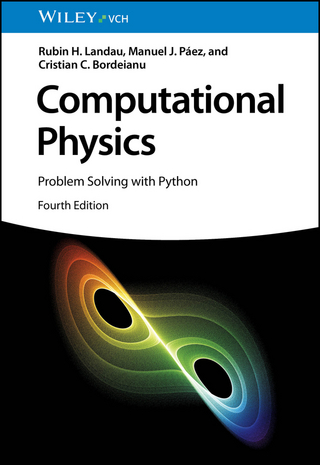
University Physics, Volume 2 (Chapters 21-37), Global Edition
Pearson Education Limited (Verlag)
978-1-292-31735-9 (ISBN)
UNIVERSITY PHYSICS VOLUME 2 contains Chapters 21-37.
Practice makes perfect: Guided practice helps students develop into expert problem solvers
Practice makes perfect. The new 15th Edition of University Physics with Modern Physics, now in SI Units, draws on a wealth of data insights from hundreds of faculty and thousands of student users to address one of the biggest challenges for students in introductory physics courses: seeing patterns and making connections between problem types. Students learn to recognise when to use similar steps in solving the same problem type and develop an understanding for problem solving approaches, rather than simply plugging in an equation.
This new edition addresses students’ tendency to focus on the objects, situations, numbers, and questions posed in a problem, rather than recognising the underlying principle or the problem’s type. New Key Concept statements at the end of worked examples address this challenge by identifying the main idea used in the solution to help students recognise the underlying concepts and strategy for the given problem. New Key Example Variation Problems appear within new Guided Practice sections and group problems by type to give students practice recognising when problems can be solved in a similar way, regardless of wording or numbers. These scaffolded problem sets help students see patterns, make connections between problems, and build confidence for tackling different problem types when exam time comes.
Hugh D. Young was Emeritus Professor of Physics at Carnegie Mellon University. He earned both his undergraduate and graduate degrees from that university. He earned his Ph.D. in fundamental particle theory under the direction of the late Richard Cutkosky. Dr. Young joined the faculty of Carnegie Mellon in 1956 and retired in 2004. He also had two visiting professorships at the University of California, Berkeley. Dr. Young's career was centred entirely on undergraduate education. He wrote several undergraduate-level textbooks, and in 1973 he became a coauthor with Francis Sears and Mark Zemansky for their well-known introductory textbooks. In addition to his role on Sears and Zemansky's University Physics, he was the author of Sears and Zemansky's College Physics. Dr. Young earned a bachelor's degree in organ performance from Carnegie Mellon in 1972 and spent several years as Associate Organist at St. Paul's Cathedral in Pittsburgh. Roger A. Freedman is a Lecturer in Physics at the University of California, Santa Barbara. He was an undergraduate at the University of California campuses in San Diego and Los Angeles and did his doctoral research in nuclear theory at Stanford University under the direction of Professor J. Dirk Walecka. Dr. Freedman came to UCSB in 1981 after three years of teaching and doing research at the University of Washington. At UCSB, Dr. Freedman has taught in both the Department of Physics and the College of Creative Studies, a branch of the university intended for highly gifted and motivated undergraduates. He has published research in nuclear physics, elementary particle physics, and laser physics. In recent years, he has worked to make physics lectures a more interactive experience through the use of classroom response systems and pre-lecture videos. In the 1970s Dr. Freedman worked as a comic book letterer and helped organise the San Diego Comic-Con during its first few years.
Volume 1 contains Chapters 1–20
Volume 2 contains Chapters 21–37
Volume 3 contains Chapters 37-44
MECHANICS
1. Units, Physical Quantities, and Vectors
2. Motion Along a Straight Line
3. Motion in Two or Three Dimensions
4. Newton’s Laws of Motion
5. Applying Newton’s Laws
6. Work and Kinetic Energy
7. Potential Energy and Energy Conservation
8. Momentum, Impulse, and Collisions
9. Rotation of Rigid Bodies
10. Dynamics of Rotational Motion
11. Equilibrium and Elasticity
12. Fluid Mechanics
13. Gravitation
14. Periodic Motion
WAVES/ACOUSTICS
15. Mechanical Waves
16. Sound and Hearing
THERMODYNAMICS
17. Temperature and Heat
18. Thermal Properties of Matter
19. The First Law of Thermodynamics
20. The Second Law of Thermodynamics
ELECTROMAGNETISM
21. Electric Charge and Electric Field
22. Gauss’s Law
23. Electric Potential
24. Capacitance and Dielectrics
25. Current, Resistance, and Electromotive Force
26. Direct-Current Circuits
27. Magnetic Field and Magnetic Forces
28. Sources of Magnetic Field
29. Electromagnetic Induction
30. Inductance
31. Alternating Current
32. Electromagnetic Waves
OPTICS
33. The Nature and Propagation of Light
34. Geometric Optics
35. Interference
36. Diffraction
MODERN PHYSICS
37. Relativity
38. Photons: Light Waves Behaving as Particles
39. Particles Behaving as Waves
40. Quantum Mechanics I: Wave Functions
41. Quantum Mechanics II: Atomic Structure
42. Molecules and Condensed Matter
43. Nuclear Physics
44. Particle Physics and Cosmology
| Erscheinungsdatum | 31.10.2019 |
|---|---|
| Verlagsort | Harlow |
| Sprache | englisch |
| Maße | 230 x 275 mm |
| Gewicht | 1312 g |
| Themenwelt | Naturwissenschaften ► Physik / Astronomie |
| ISBN-10 | 1-292-31735-3 / 1292317353 |
| ISBN-13 | 978-1-292-31735-9 / 9781292317359 |
| Zustand | Neuware |
| Informationen gemäß Produktsicherheitsverordnung (GPSR) | |
| Haben Sie eine Frage zum Produkt? |
aus dem Bereich


